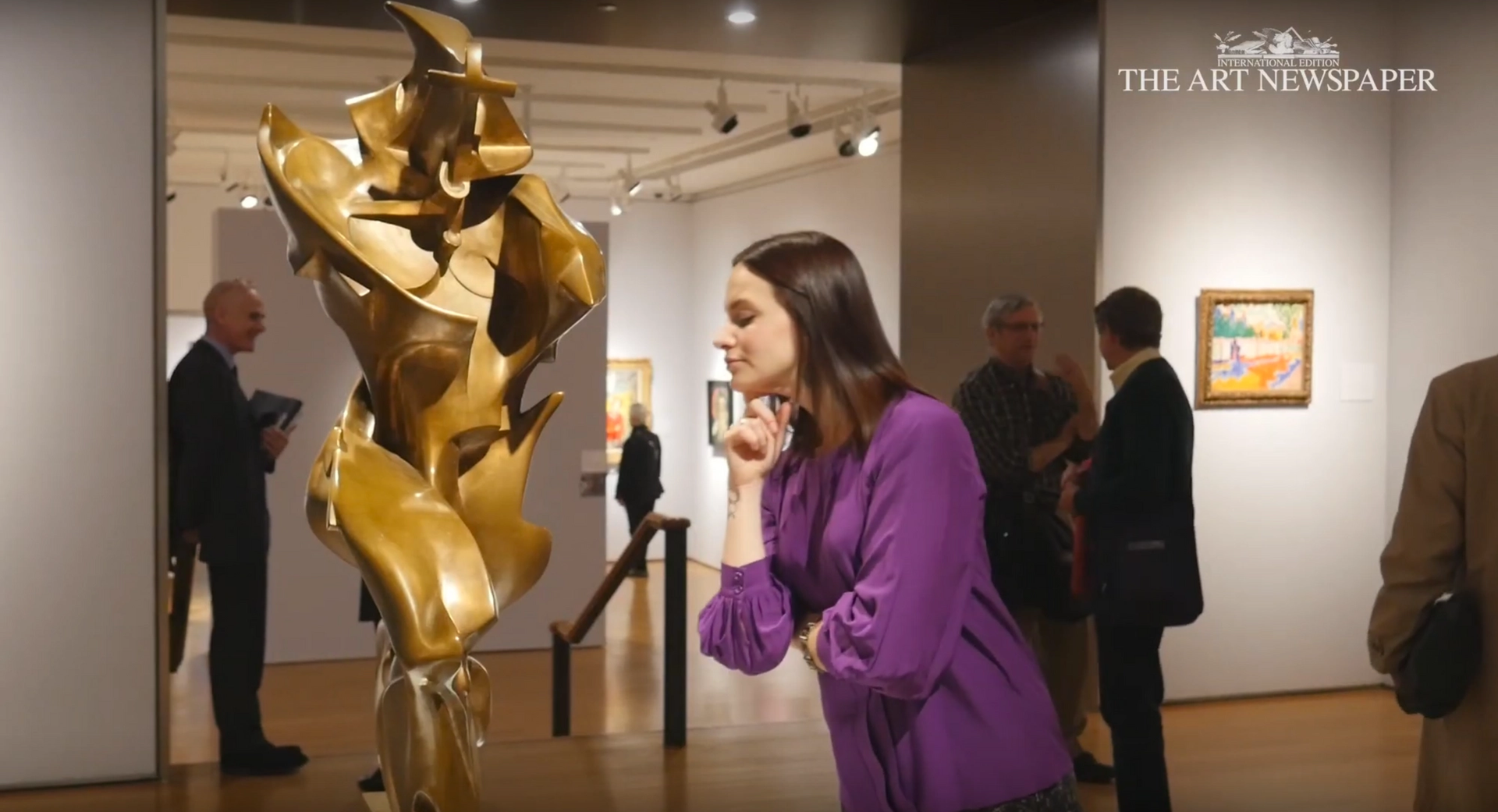The Art Newspaper's editors break down the art market's biggest stories and spectacles, with the help of special guests. In our pilot video report series Hammer Time, our deputy art market editor Margaret Carrigan recaps the highlights of New York's billion-dollar auction week, interviews specialists and brings you live views from the salesroom.
Last night, she was at Christie's Impressionist and Modern art sale, where René Magritte painting Le Seize Septembre made $17m ($19.6m with fees), topping the $162m auction ($191m with fees). Despite a 90% sell-through rate, the evening was still around 30% down from total sales this time last year. Watch what she has to say about the evening's events, and read a summary of the video report below:
It is a lean autumn auction week here in New York City—$1.2 billion worth of Impressionist, Modern and contemporary art is about to hit the block, but that’s down almost 25% from similar sales last fall. And confidence in the market has fallen by more than 20% since May, according to ArtTactic.
Christie’s Impressionist and Modern evening sale kicks off the so-called “gigaweek” and for that reason often shows which way the art market winds may be blowing. The evening was expected to bring in $148m to $219m—quite the drop from its $399m sale in May. Indeed, there were no real big-ticket items in this sale, due to a dearth of estate consignments. There were, however, a lot of lower priced lots under $20m, “little gems” as the auction house’s senior specialist Jessie Fertig put it.
Pablo Picasso’s Femme dans un fauteuil (Françoise) bore the highest estimate of any work in the sale at $12m-$18m. It barely scratched that, however, when it hammered at $11.5m. While it certainly did not prove the intended highlight of the night as its cover-lot status suggested, its sale price of $13.3m with fees still represents a tidy profit on a work that last sold for $3m in 2000.
It was René Magritte's surrealist painting Le Seize Septembre that fetched the highest price of the evening. One of the largest canvases ever produced by the artist remaining in private hands, according to the evening's auctioneer and co-chairman of global private sales Adrien Meyer, it hammered at $17m ($19.5m with fees) on a $7m-$10m estimate.
Umberto Boccioni's famous Futurist figure Unique Forms of Continuity in Space reached the furthest beyond its estimate. Though it was the first Boccioni to come to market in half a century, its pre-sale estimate of $3.8m-$4.5m seemed a bit of a reach given it is a third-series cast. Nevertheless, a prolonged bidding war broke out that propelled it to $14m ($16.1m with fees), a world record for the artist.

Around 35% of the lots in the sale, however, went for below their low estimates (before fees), suggesting that low expectations may have yielded low reserve prices. Among those hammering for the stated low estimate, of course, was the cover-lot Picasso, which was also backed by a third-party guarantee. Eight other works were guaranteed to sell as well; most of them went for at or below their low estimates, too, suggesting that their guarantors are presumably the proud owners now. The guaranteed works collectively brought in $39.5m (before fees) of the night’s total sales.
Around 10% of works were bought in—a business-as-usual margin to be sure—including Paul Gaugin’s La Boudeuse and Marc Chagall’s Le clown multicolors, both estimated to fetch $2.5m-$3.5m. And on an already slim sale, the withdrawal of three lots totalling around $11m before the evening was underway proved fat that may not need have been trimmed.

